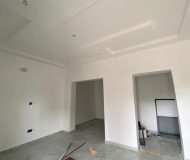
Empowering Low-Income Individuals to Achieve Homeownership
Exploring the Possibilities for Low-Income Earners in Homeownership
In the realm of real estate and homeownership, a question that often arises is whether low-income earners can realistically build a home. This blog delves into the various factors influencing this scenario, shedding light on potential solutions and avenues for those with modest incomes to embark on the journey of homeownership.
Read also: Experts Advocate for Overhaul of Real Estate Industry through New Policies
Challenges Faced by Low-Income Earners:
Navigating Obstacles on the Path to Homeownership
Low-income earners encounter a myriad of challenges when considering homeownership. The financial constraints associated with construction costs, land acquisition, and mortgage affordability often pose significant hurdles. Additionally, the stringent criteria set by traditional lenders can make it difficult for individuals with modest incomes to secure the necessary funding.
Read also: Protecting Your Real Estate Investments: How to Recognize and Avoid Common Scams
Exploring Affordable Housing Options:
Strategies to Facilitate Homeownership for Low-Income Individuals
Despite the challenges, there are viable strategies and affordable housing options that can empower low-income earners to build a home:
Read also: How Tinubu’s Policies Are Reshaping the Real Estate Landscape
- Government-Sponsored Programs: Many governments offer assistance programs and subsidies to facilitate affordable housing for low-income individuals. Exploring these initiatives can provide financial relief and make homeownership more attainable.
- Community Land Trusts: Community land trusts are nonprofit organizations that acquire and hold land for the benefit of the community. Low-income individuals can often access affordable housing options through these trusts, providing an alternative to traditional homeownership.
- Microfinancing and Nonprofit Organizations: Microfinancing institutions and nonprofit organizations focus on providing financial support to those traditionally underserved by mainstream lenders. These entities may offer tailored financing solutions, making it easier for low-income earners to build their homes.
- Sweat Equity Programs: Some housing programs allow individuals to contribute labor, or “sweat equity,” as part of their investment in the construction process. This can significantly reduce costs and create a sense of ownership and pride among participants.
- Alternative Construction Methods: Exploring alternative and cost-effective construction methods, such as prefab or tiny homes, can be a practical approach for low-income individuals. These options often require less initial investment and offer quicker construction timelines.
While the road to homeownership may seem challenging for low-income earners, there are tangible strategies and resources available to make this dream a reality. By tapping into government programs, community initiatives, and alternative approaches to construction, individuals with modest incomes can navigate the path to building and owning their homes. This blog encourages a hopeful perspective, emphasizing that with the right support and innovative solutions, homeownership is indeed within reach for everyone, regardless of income level.





